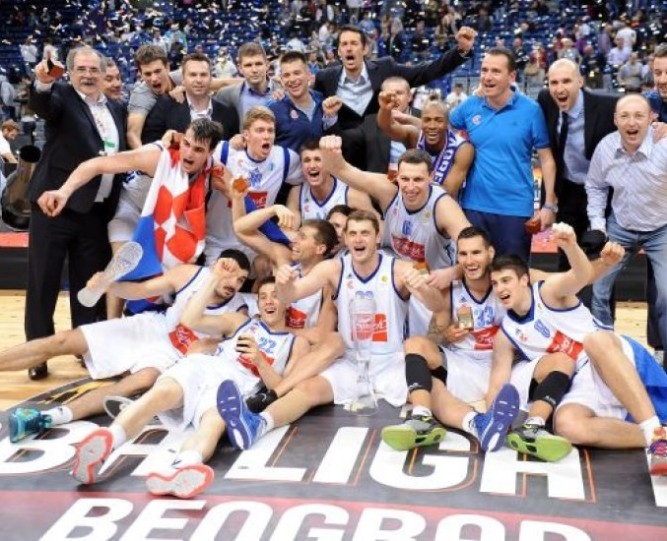
The decision by the ABA Liga to change its playoff format is the latest in a string of moves around Europe’s leagues that should make it far easier to understand what’s going on this season.
Final fours are fun. Everything is at stake in a terribly short and sudden format. A year’s preparation rests entirely on one or two games. For the casual fan, it’s the easy way to drop in and hop on the bandwagon. The format however is far from ideal for actually addressing who the best really is and, more importantly, tends to render the preceding year’s work meaningless for the players involved.
Last spring the ABA Liga final four in Belgrade saw the two higher seeded teams from the host city fall to a pair of sides from Zagreb that finished third and fourth in the regular season. It was a shining moment for Dario Saric as he led Cibona Zagreb to the title. The stakes however made the method look a touch foolhardy. Crvena Zvezda and Partizan had taken the top two spots in the regular season but their Euroleague qualification hopes turned on one-and-done games. Zvezda earned a reprieve after Cibona were unable to meet Euroleague requirements but the situation put the format’s issues into context.
Earlier this month the ABA Liga changed course and now Euroleague qualification and the title itself will adopt a more conventional format. The top four will still make the post-season but the playoffs will now take place over a best-of-five format. Not only does this provide more reliable a sample it also rewards regular season performance through the home advantage awarded to the higher seeded team. It’s far from rocket science but it’s going to make following the regular season of the league more interesting, knowing that fourth isn’t essentially as good as first.
Meanwhile the muddy nature of the Lithuanian league (LKL) that made last season headache inducing for hardcore fans, never mind casual observers, has been fixed. For those unaware, teams in the LKL didn’t play the same number of games. Some played four rounds, others play two, and final rankings were decided on win percentage. Most leagues are also effectively on win percentage but that’s because the results from that don’t have any contextual difference to the overall win-loss record because…breathe…everyone plays the same number of games.
With that in mind the LKL’s decision to go all-in on a conventional season is another issue which shouldn’t be ground-breaking but turns out to be quite a big deal. Two of what are the more fun leagues to follow in Europe are now far more interesting to keep an eye on during the months before the post-season.
The LKL switch has also inadvertently helped bring a touch more meaning to the most derided league in Europe, and I say that as an Irishman whose local team’s gym is literally surrounded by an actual gym. When I say to people that I actually like the VTB United League, they look at me like I just killed their cat. The reason is pretty simple, it’s a high level that is easy to watch because of it’s lack of geo-blocking. Quality stream, decent hoops, I’m grand Ted.
The problem was that the haters had a point. It was a bizarre mishmash attempt to recreate the old Soviet League only it really seemed like nobody wanted that save for those funding it. The withdrawal of the LKL sides coupled with the inability of Ukrainian sides to compete has forced contraction and made it look a lot more like the product most viewers really want: A conventional Russian League. There are still six non-Russian sides in it but everybody is in the same group now which means 20 games featuring pairings involving CSKA Moscow, Unics Kazan, Nizhny Novgorod, Lokomotiv Kuban, and Khimki over the course of the regular season. That’s a hell of a lot easier to sell than when those teams were split up. While CSKA vs Astana will still be an impossible sell, the overall fan experience has improved.
Nerds rejoice, we now have even more reasons to ignore reality until the post-season.




Leave a Reply